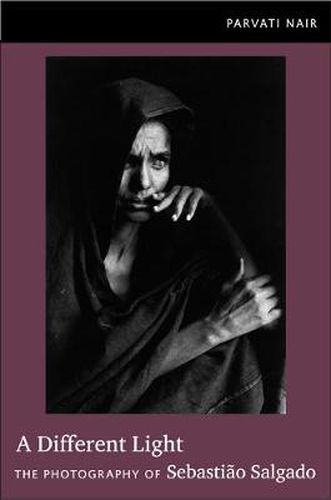Readings Newsletter
Become a Readings Member to make your shopping experience even easier.
Sign in or sign up for free!
You’re not far away from qualifying for FREE standard shipping within Australia
You’ve qualified for FREE standard shipping within Australia
The cart is loading…






A Different Light is the first in-depth study of the work of Sebastiao Salgado, widely considered the greatest documentary photographer of our time. For more than three decades, Salgado has produced thematic photo-essays depicting the massive human displacement brought about by industrialization and conflict. These projects usually take years to complete and include pictures from dozens of countries. Parvati Nair offers detailed analyses of Salgado’s best-known photo-essays, including Workers (1993) and Migrations (2000), as well as Genesis, which he began in 2004. With Genesis, Salgado has turned his lens from human turmoil to those parts of the planet not yet ravaged by modernity. Interpreting the photographer’s oeuvre, Nair engages broad questions about aesthetics, history, ethics, and politics in documentary photography. At the same time, she draws on conversations with Salgado and his wife and partner, Lelia Wanick Salgado, to explain the significance of the photographer’s life history, including his roots in Brazil and his training as an economist; his perspectives; and his artistic method. Underpinning all of Salgado’s major projects is a concern with displacement, exploitation, and destruction-of people, communities, and land. Salgado’s images exalt reality, compelling viewers to look and, according to Nair, to envision the world otherwise.
$9.00 standard shipping within Australia
FREE standard shipping within Australia for orders over $100.00
Express & International shipping calculated at checkout
A Different Light is the first in-depth study of the work of Sebastiao Salgado, widely considered the greatest documentary photographer of our time. For more than three decades, Salgado has produced thematic photo-essays depicting the massive human displacement brought about by industrialization and conflict. These projects usually take years to complete and include pictures from dozens of countries. Parvati Nair offers detailed analyses of Salgado’s best-known photo-essays, including Workers (1993) and Migrations (2000), as well as Genesis, which he began in 2004. With Genesis, Salgado has turned his lens from human turmoil to those parts of the planet not yet ravaged by modernity. Interpreting the photographer’s oeuvre, Nair engages broad questions about aesthetics, history, ethics, and politics in documentary photography. At the same time, she draws on conversations with Salgado and his wife and partner, Lelia Wanick Salgado, to explain the significance of the photographer’s life history, including his roots in Brazil and his training as an economist; his perspectives; and his artistic method. Underpinning all of Salgado’s major projects is a concern with displacement, exploitation, and destruction-of people, communities, and land. Salgado’s images exalt reality, compelling viewers to look and, according to Nair, to envision the world otherwise.